Cura Nir-Gundi Ras
Cura Nir-Gundi Ras, Migraine, backache, headache, stiffness of muscular pain, gaut, arthitis, ankylosing spondylosis, aervical and lumber spondylosis, spetic arthritis all body pain, aports injurie, bursitis tendonitis etc. Highly effective in any type infection including loughs infection, skin infection etc.
Cura Nir-Gundi Ras, Nirgundi or Five-Leaved Chaste Tree (Vitex negundo) is evergreen medicinal deciduous shrub. It is native to India and also found growing in Bangladesh, China, Philippines, Sri Lanka, and Japan. It is usually grown as a fencing for agriculture lands as well as house. The leaves are used as biopesticide and insecticide. The leaves are dried and kept with woolen clothes to repel insects. The smoke from the leaves is used as mosquito repellent.
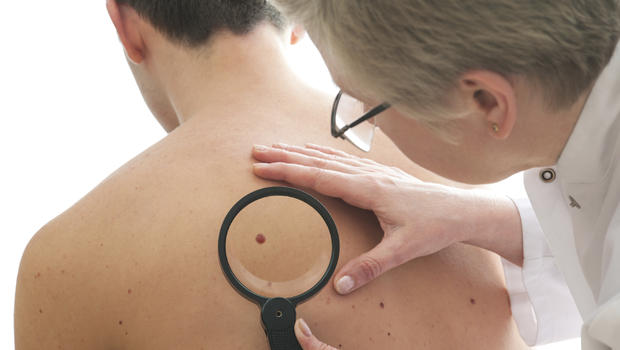
General Information of Cura Nir-Gundi Ras
Plant Description:
Vitex negundo is a much-branched shrub up to 5 m tall or sometimes a small, slender tree with thin, gray bark.
Leaves:
Palmately compound petiole 2:5: 3.8 cm long; mostly trifoliate, occasionally pentafoliate; in trifoliate leaf, leaflet lanceolate or narrowly lanceolate, middle leaflet 5- 10 cm long and 1.6:3.2 cm broad, with 1- 1.3 cm long petiolule, remaining two sub-sessile; in pentafoliate leaf inner three leaflets have petiolule and remaining two sub-sessile; surface glabrous above and tomentose beneath; texture leathery.
Roots:
Cylindrical, hard, tough with irregular fractures; external surface rough due to longitudinal, narrow, cracks and small rootlets; cut surface shows cork region greyishbrown, middle region greyish-white, and xylem region cream coloured; bark thin, easily separates from wood; wood hard, forming major part of root.
Flowers:
Bluish-purple, small, in peduncled cymes, forming large, terminal, often compound, pyramidal panicles.
Fruit:
The fruit is a rounded drupe, 1 to 3 mm in diameter, 1/3 rd to 3/4 th of its size surrounded by a dull grey cup like, persistent calyx alongwith pedicel; calyx cup may show one or two vertical splits; fruit colour light brown to black; locules two, each containing two seeds; texture smooth, taste and odour not characteristic.
Common names of Cura Nir-Gundi Ras
Scientific Name of Cura Nir-Gundi Ras:
Vitex Negundo
Sanskrit: Nirgundi, Sindhuvara, Indrasursa, Indranika, Sinduka, Nisinda, Shephali, Indrani, Nirgundika, Renuka, Sindhuvaram, Sinduya, Sugandhika, Surasa, Vrikshaha, Nirgunda, Shveta Sephalika, Suvaha, Nirgundi, Nilika (Kali Newri), Nilapushpi, Nilanirgundi, Shvetasurasa, Bhootveshi (Whitefl Owered Newri), Svetapuspa
Assamese: Pasutia, Aggla-Chita, Pochatia,Aslok
Bengali: Nisinda, Samalu, Nirgundi,Sinduari, Beguna, Nishinda, Nishinde
English: Five-Leaved Chaste Tree, Chinese Chaste Tree, Indian Privet
Gujarati: Nagoda, Nagaol, Nirgari
Hindi: Samhalu, Saubhalu, Nirgandi
Kannada: Bile-Nekki
Malayalam: Indrani
Siddha: Noohi
Tamil: Nirkunnchi, Nallanochi
Telugu: Nallavalli, Vavilli, Tellavavilli
Urdu: Sambhalu, Panjangusht
Arabic: Uslaq
Persian: Panchaguskt, Sisban
Ayurvedic Properties and Action of Vitex Negundo
Vitex negundo is known as Indrani, Nirgundi, Nilanirgundi, Surasa, Svetasurasa, Shephali, Sinduvara, Shephalika and Nila in Sanskrit. The white-flowered variety is known as Sindhuvaara and the blue-flowered as Nirgundi or Shephaali.
Nirgundi belongs to the Surasaadi group of herbs of Ayurvedic medicine, considered specific for cough, rhinitis, asthma. This group helps in the cleansing of ulcers.
Leaf is considered astringent, bitter and pungent in taste (Rasa), pungent after digestion (Vipaka), and is hot in effect (Virya). It is pungent in both the initial and post-digestive tastes (Rasa and Vipaka) and gives relief in Vata and Kapha and increases pitta. It is carminative, antiemetic and thermogenic. It is useful in indigestion, low appetite, nausea and piles.
Rasa (taste on tongue): Kashaya (Astringent), Katu (Pungent), Tikta (Bitter)
Guna (Pharmacological Action): Laghu (Light), Ruksha (Dry)
Virya (Action): Ushna (Leaf Heating); Sheet (Fruit, Flowers, Seeds Cooling)
Vipaka (transformed state after digestion): Katu (Pungent)
Effect on Dosha: Reduces Vata and Kapha Dosha but increases Pitta (in excess).
Preparations: Infusion, Decoction, Oil
System: Digestive, Circulatory
Tissues: Plasma, Blood, Muscles, Nerves and Marrow, Reproductive
It is an Ushna Virya herb. Ushna Virya or hot potency herb, subdues Vata (Wind) and Kapha (Mucus) and increases Pitta (Bile). It has property of digestion, vomiting and purging, and gives feeling of lightness. It is considered bad for sperms and fetus.
It is a Katu Vipak herb. Vipak refers to post-digestive (effect after digestion / cooking of Rasa) effect of tastes after its mixing with digestive juices. It is the long-term effect of herb. Katu Viapk herb, increases dryness in body. Such foods reduce fertility and Kapha. Excess intake of such foods aggravates Vata and gas in body. Katu Vipak has catabolic effect on body.
Ayurvedic Action / Karma
- Kaphahara: Pacifies Kapha Dosha.
- Kapha-Vatahar: Remover of the Humor of Kapha-Vata.
- Kasa-shvashar: Gives relief in cough and Asthma.
- Krimighna: Destroys worms.
- Shothhar: reduces inflammation.
- Vatahara: Pacifies Vata Dosha.
- Vishaghna: Poison-destroying.
- Vranashodhana: Wound cleaning.
Important Medicinal Properties
Vitex negundo is rich in medicinal properties. The understanding of these properties will help us to better utilize this herb. These also indicate the conditions in which we should avoid it. Below is given medicinal properties along with the meaning.
- Analgesic: Acting to relieve pain.
- Anthelmintic: Antiparasitic, expel parasitic worms (helminths) and other internal parasites from the body.
- Antiandrogenic: Androgen antagonists or testosterone blocker drug, counteract the effects of the male sex hormones, testosterone and dihydrotestosterone.
- Anti-asthmatic: Treat or prevent asthma attacks.
- Anticatarrhal: Remove excess mucous from the body.
- Anti-inflammatory: Reducing inflammation by acting on body mechanisms.
- Antimicrobial: Active against microbes.
- Appetizer: Improves appetite.
- Carminative: Preventing the formation or causing the expulsion of flatulence.
- Discutient: Agent or process that disperses a tumour or lesion.
- Emmenagogue: Stimulates or increases menstrual flow.
- Hepatoprotective: Prevent damage to the liver.
- Larvicidal: Kills mosquito larva.
- Muscle relaxant: Relax or reduce tension in muscle.
Health Benefits of Nirundi
- The leaves have warming action.
- It stimulates circulation.
- It gives relief in pain and inflammation of muscles and joints.
- It is used both internally and externally for rheumatoid arthritis, osteoarthritis, sprains and pain in muscles.
- It can be combined with Trikatu to reduce Ama Dosha.
- The poultice prepared from the leaves applied externally gives relief in pain in joints, muscles, nerves and headaches.
- It is insecticide, pesticide and germicide
Please click here to view more products. If you want to contact us please click here. You can also Request a Product.

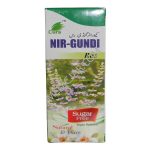
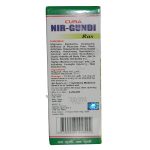
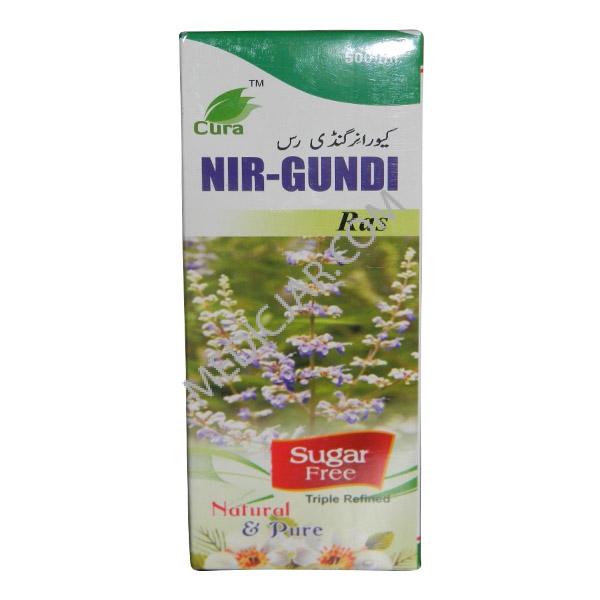
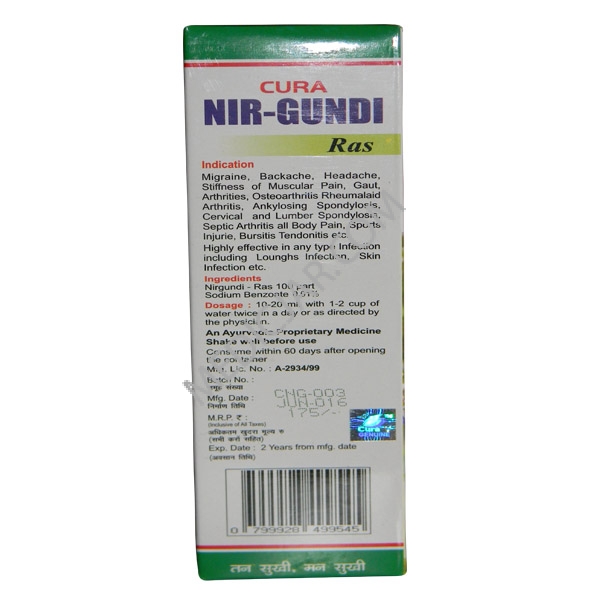




kishori lal Nanda –
I am Very upset with my muscular pain. My Cousin Brother Suggest me Cura Nir-Gundi Ras. I Buy This Product From MedicJar.com. Product Delivered in 24 hours. I use and Feel Awesomeee. Thanks